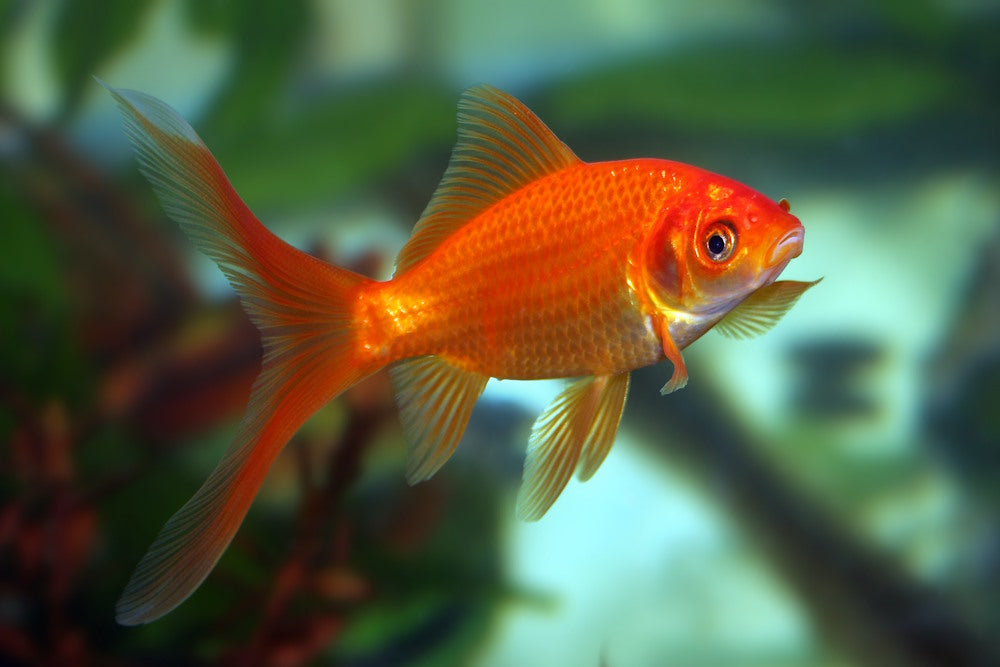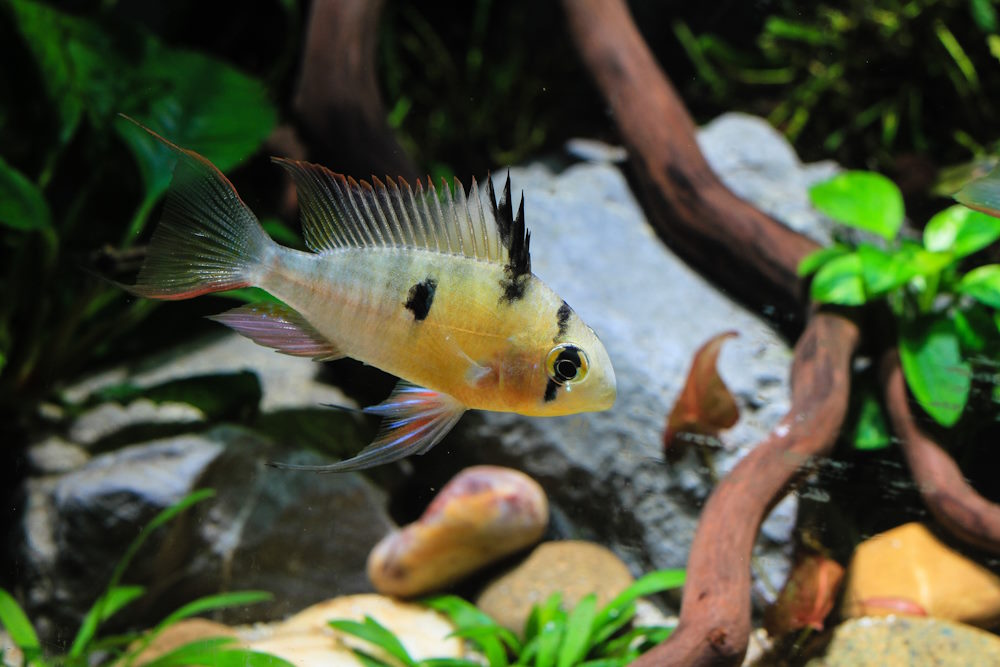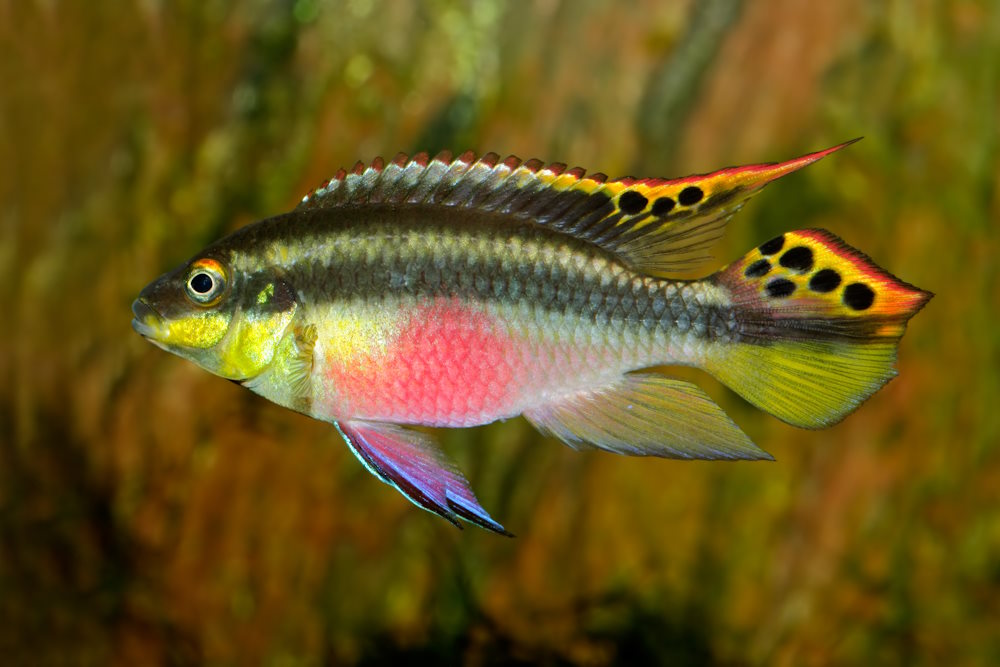Top 5 Underrated Aquarium Fish for Your Next Community Tank
With so many aquarium fish available in the fish store, many species are commonly sold but end up going unnoticed by hobbyists. Sometimes they are looked down upon as “beginner fish” that aren’t as rare or unique enough. Other times, they may have once been all the rage but then fell out of favor for more newly discovered species. Most of these animals are pretty hardy and not hard to find, so take a look at our top 5 underappreciated fish that you should consider trying in your next aquarium.
1. Common Goldfish

Carassius auratus
While fancy goldfish like ranchus and orandas often get a lot of attention, the common goldfish is often the first pet fish that people have ever kept because they’re frequently given away as carnival prizes or sold cheaply as feeder fish. While fancy goldfish have an egg-shaped body with a flowy, double tail, the common goldfish has a torpedo-shaped body with a single tail and therefore can swim much faster. They come in many colors including orange, red, white, black, yellow, olive-brown, and more. Because of their inexpensive cost, most beginner fishkeepers don’t realize that common goldfish can grow up to 12 inches long and live between 10–40 years. However, they are extremely robust and can absolutely be a fun monster fish to keep in the right setup.
Depending on the adult size of the fish, common goldfish may eventually need to be kept in a large tank of 4 feet or longer. As a cool water fish that enjoys temperatures from 50–78°F (10–26°C) and beyond, they can also live in an outdoor pond. They are not picky about pH levels from 6–8 and soft to hard GH, but they will eat most of your aquarium plants if given the chance. We like to use them as “vacuum cleaners” to get rid of excess duckweed, but for their normal diet, feed them goldfish pellets, Repashy gel food, and plenty of blanched and canned vegetables to help prevent bloating. They will peacefully live with other cool water tank mates that aren’t small enough to be eaten, so check out the bigger species on this list.
2. White Cloud Mountain Minnow

Tanichthys albonubes
If the common goldfish is too massive for your tastes but you like the idea of keeping an unheated aquarium, why not try the white cloud minnow? At only 1.5 inches (4 cm) long, they are one of our bestsellers at the Aquarium Co-op fish store because of their hardiness and ease of breeding for an egg-scattering species. The regular type has a gray-brown body, white horizontal stripe, and red fins, but they also come in 24k gold and long fin varieties. As a schooling fish originally from China and Vietnam, they can live in pH of 6.5–8.5, 65–77°F (18–25°C), and soft to hard water. You’ll want to get a group of at least six minnows for a 10-gallon tank or larger if you want to add more tank mates. They go well with almost any similar-sized, peaceful fish that likes cooler water, such as celestial pearl danios, clown killifish, and variatus platies. Because of their tiny mouths, aim for smaller foods like crushed flakes, nano pellets, frozen daphnia, and Easy Fry and Small Fish Food. For more information on how to breed them, see our full care guide.
3. Paradise Fish

Macropodus opercularis
The paradise fish or paradise gourami is one of the first ornamental fish ever kept in an fish tank and is known for its beautiful blue and red-orange tiger striping and lyre-shaped tail. While it used to be abundant in the aquarium trade, now it’s a little harder to find since fishkeepers gradually moved toward the latest and greatest. At 2.5–3 inches (6–8 cm) in size, think of this Asian labyrinth fish as an undemanding centerpiece alternative to a betta fish or dwarf gourami that would do fine in an unheated fish tank of 20 gallons or more. They can live in an exceptionally wide range of water parameters, including pH levels of 6–8, 60–80°F (16–27°C), and soft to hard GH. They are semi-aggressive like bettas and dwarf gouramis, so keep them with fast-swimming or unflappable tank mates like barbs, loaches, and peaceful catfish that aren’t big enough to eat them. They aren’t difficult to feed and will happily consume all the typical betta fish foods — such as frozen bloodworms, betta pellets, and freeze-dried brine shrimp.
4. Bolivian Ram Cichlid

Mikrogeophagus altispinosus
Everyone loves the colorful German blue ram (Mikrogeophagus ramirezi) and its many color morphs, but don’t forget about the Bolivian ram, its hardy cousin that is much easier to care for. They have a very similar shape as the German blue ram with a yellowy body, red-rimmed fins, and a black stripe running vertically through its eye. Plus, the males have elongated streamers on the tips of their fins and tail. Their natural habitat in the Amazon River basin ranges from 72–80°F (22–27°C), pH between 6–7.5, and soft to moderate hardness. This bottom dweller enjoys digging through the substrate, so use sand or small-sized gravel to see this natural behavior. They don’t tend to uproot plants, so you should have no problems keeping them in a planted aquarium.
A single or pair of rams can live in a 20-gallon fish tank, but go for a larger size if you plan on adding tank mates. While they are fairly peaceful, ram cichlids can get a little territorial during mating season, so provide lots of hiding spots and aquarium plants to block line of sight. If you find your rams are a bit shy, pick some dither fish — like outgoing tetras, corydoras, or livebearers — to help them feel more comfortable. Feed them plenty of foods like sinking pellets, frozen bloodworms, and live white worms, and if you have a pair, you may soon see some eggs laid on a flat stone or in a small pit. The adults show excellent parental care by guarding their young until they are old enough to feed on their own, so definitely give them a shot.
5. Kribensis

Pelvicachromis pulcher
This amazing 3- to 4-inch (7.5–10 cm) cichlid has some of the most beautiful rainbow colors found in the freshwater aquarium hobby. Imagine a fish with a yellow face, reddish-pink belly, black horizontal band, and black eye spots on the dorsal fin and tail. Plus, the fins display many more colors like orange, blue, and sometimes even lavender. While they are a type of African cichlid, they come from slow-moving, plant-filled waters in Benin, Nigeria, and Cameroon and do not have the extremely high pH requirements of African Rift Lake cichlids. You can keep them in pH between 6–8, 75–82°F (24–28°C), and soft to hard water.
As another bottom dweller that likes to dig, give them a 20-gallon long or larger tank with sand or small gravel and hardier plants like anubias and java fern. While they can become territorial when breeding, they do get along with other similar-sized, community fish such as tetras, barbs, catfish, and loaches. Like Apistogramma and ram cichlids, they show parental care over their offspring and reproduce quite readily as long as you provide apisto caves and coconut huts for spawning. Give them a nice, varied diet of pellets, flakes, brine shrimp, and even some blanched or canned vegetables to keep them happy and healthy.
All of these underrated fish have a special place in our hearts because they have brought us many years of enjoyment in our home aquariums and ponds, so we hope you consider giving them a try the next time you go fish shopping. While we do not ship live fish, you can check out our list of preferred online retailers that will deliver fish and invertebrates to your front door.




